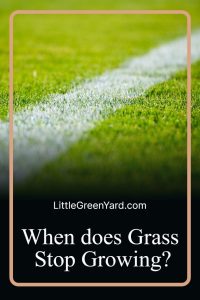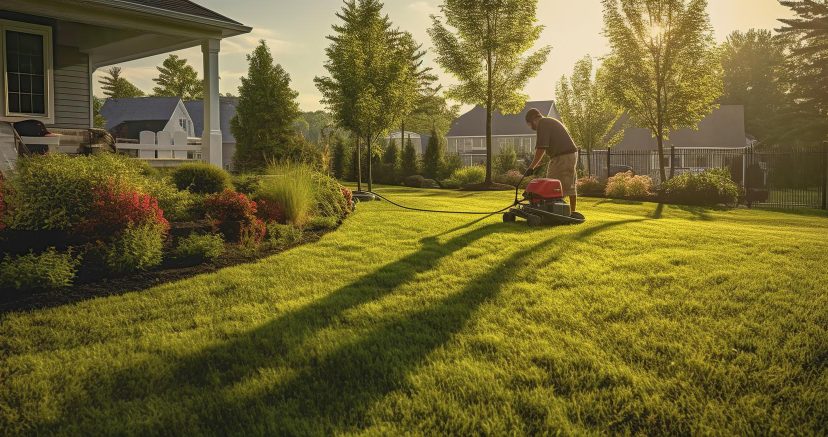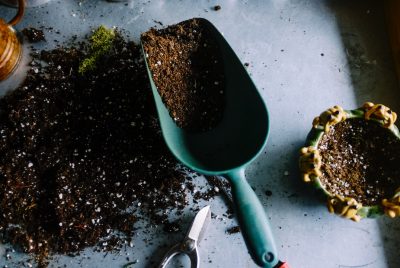When does Grass Stop Growing?
Deprecated: The PSR-0 `Requests_...` class names in the Requests library are deprecated. Switch to the PSR-4 `WpOrg\Requests\...` class names at your earliest convenience. in /home/littlegr/public_html/wp-includes/class-requests.php on line 24
When you picture a lawn, you probably are thinking of a nice green lush lawn and not one that is filled with bald patches of soil. When does the grass stop growing? It’s a query that lingers in the minds of many homeowners who take pride in maintaining a lush, green lawn. In this article, we’ll embark on a journey through the various stages of grass growth, exploring whether grass ever truly stops growing, how to prevent your lawn from meeting an untimely demise, and the crucial role temperature plays in the growth of your green oasis.
The Life Cycle of Grass: A Dynamic Journey
To comprehend when grass stops growing, we first need to understand its life cycle. Grass goes through distinct stages, starting from germination, progressing through seedling, vegetative, and reproductive stages, and finally reaching maturity. In addition, if you are living in a temperate region, your lawn also has to withstand different weather conditions, depending on the seasons. Nonetheless, during the initial growth stages, it is important to fertilize your lawn to provide your grass the nutritional boost it needs during the critical growing periods.
Does Grass Ever Truly Stop Growing?
Temperature plays a pivotal role in dictating the pace of grass growth. While grass is generally resilient, extreme temperatures can affect its growth rate. The optimal temperature range for most grass types is between 60°F to 75°F (15°C to 24°C). Beyond this range, you may notice a slowdown in growth. While grass may appear dormant during colder seasons, it rarely experiences a complete standstill. Certain grass varieties, aptly named cool-season grasses, thrive in colder climates. Varieties such as Kentucky bluegrass, fescue, and ryegrass embrace the chill and continue to grow, albeit at a slower pace. These grasses not only maintain their green hue but also contribute to the overall aesthetics of your lawn during the winter months.
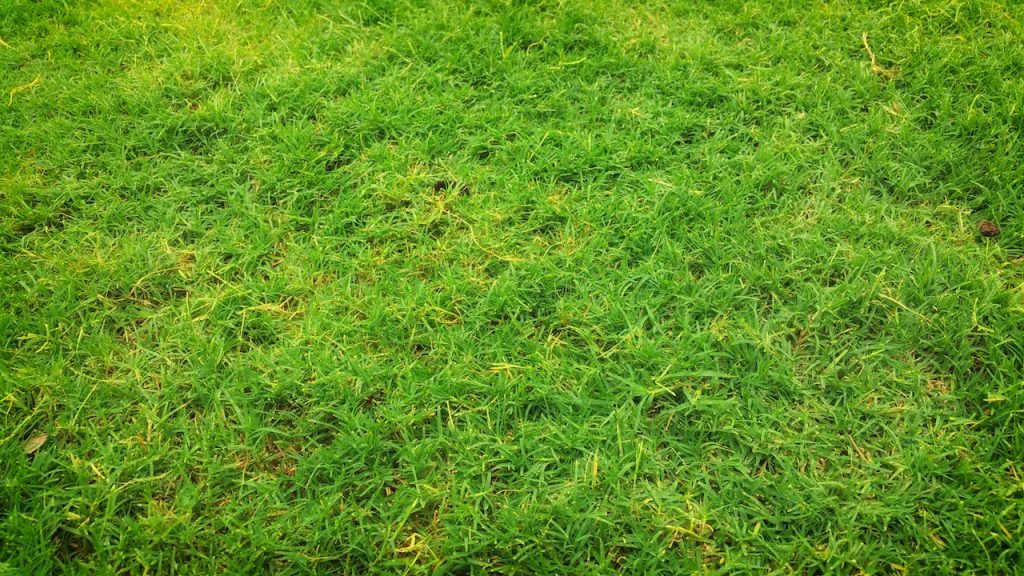
Killing Your Lawn: Unintended Consequences
The last thing you want to do is inadvertently kill your green haven. Overwatering, underwatering, excessive use of herbicides, and poor soil quality are common culprits that can lead to the demise of your lawn. Understanding the delicate balance between nurturing and unintentionally harming your grass is key to maintaining a healthy and thriving lawn. Here are some tips to ensure a thriving green lawn all year round:
Summer Care: Shielding Your Lawn from the Scorching Sun
Summer brings warmth and sunshine, but it can also pose challenges for your lawn. To prevent grass burn and maintain a lush green carpet, it’s crucial to implement effective summer care practices. Proper watering is the cornerstone of a healthy lawn. Rather than adhering to a fixed schedule, observe your lawn’s moisture needs. Aim for deep, infrequent watering to encourage deep root growth and resilience against drought conditions. Planting trees strategically to cast shadows on your lawn or installing shade sails are effective ways to provide relief. This prevents grass burn and also creates a comfortable environment for you to enjoy your outdoor space. Mowing at the right height is essential to keep your lawn healthy. Mowing too short can expose the soil to excessive sunlight, leading to grass burn. On the flip side, letting your grass grow too tall can create a habitat for pests and diseases.
So is your lawn looking extra crispy from summer heat? I’m going to share 3 tips on what you definitely should not do and I’ll give you a tip on what you should do to keep your grass from going dormant and keep that heat stress away.
Tip #1:
When your grass starts going dormant, and it’s turning yellow and you’re getting those big blotches of yellow spots in your grass, do not rake or detach your yard. Some of you are going to look at me and say, “Well duh, don’t rake your grass in the summer.” But you would be surprised how many people are out raking their grass or detaching their grass in my neighborhood when I’m driving around.
Your grass is not dead right now when it’s yellow — it is in dormancy. Dormancy means your grass is basically in hibernation just trying to get through this heat and this dry spell. So do not rake your grass because all you’re doing is raking up grass that is actually alive and if you detach it or rake it up, it’s just going to tear up all everything then it’s going to be gone.
Tip #2:
Do not fertilize your dormant or heat-stressed grass! Some people think if they put down fertilizer, it’s going to make that grass that’s dormant grow out. The thing is, the summer heat is already putting a lot of stress. When you add fertilizer, dormant grass has no use of it. You’re just wasting fertilizer. You definitely don’t want to fertilize in summer.
Tip #3:
Do not irrigate your grass at night. Yes, your grass needs water to get out of dormancy but if you irrigate your grass at night when it’s hot and humid, all you’re doing is promote disease. The last thing you want is dormant grass mixed with fungus and disease. When your grass is going to come out of dormancy, then fungus hits it, it’s going to kill off some of the grass. So it’ll lead to worst case of yellow in your grass and just more problems.
So stay away from irrigating your grass at night. Try to do it in the morning before the sun comes out and starts blasting away. You can also save water from excessive evaporation, so definitely try irrigating very early morning. That way, your grass has enough water to try getting through the day.
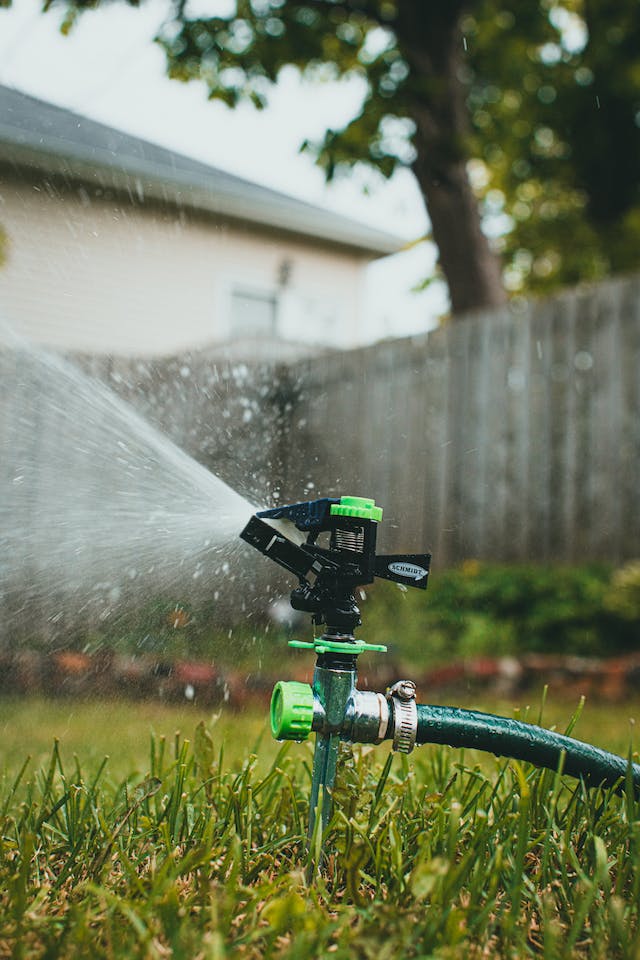
The Importance of Winter Lawn Care: Nurturing Dormant Grass
Winter lawn care plays a pivotal role in supporting grass during the cold season. Though growth is subdued, providing proper care ensures that your grass remains healthy and ready to spring back to life when temperatures rise. Strategies include milder forms of fertilization, aeration, and regular clearing of debris to allow sunlight to reach the grass. Frost is a common occurrence during cold seasons, and while it may create a picturesque landscape, it can also impact your lawn. Frost forms ice crystals on the grass blades, making them more susceptible to damage when walked on or mowed. It’s advisable to minimize foot traffic and postpone mowing until the frost has melted to protect your grass.
Here’s a secret to keep a deep dark green throughout the winter months in less than five minutes:
We’re going to be looking at something you can apply to your lawn in order to keep that dark green look and also combat moss. It is recommended to do the last cut of the season by mid-November because the grass growth is really starting to slow down.
I’ll usually take the lawn mower and raise it up on a high setting. You don’t want to cut the grass too short so it can get plenty of light and continue to photosynthesize.

The product that I use is called GreenThumb Winterizer Lawn Fertilizer. With your rotary spreader, run the edge and pass around your lawn to spread it evenly. This product contains a slow release iron. Note that Iron can stain hard surfaces and it’s also good practice to transfer any chemicals or products that you’re applying to the lawn off the lawn in case you spill any and it can damage the lawn.
Nurturing Your Green Haven
In the realm of lawn care, the question of when grass stops growing remains a fascinating enigma. The key lies in understanding the nuanced needs of your specific grass type, recognizing the impact of external factors like temperature, and implementing thoughtful care practices. By embracing the perpetual growth cycle of grass and adopting proactive lawn care measures, you can ensure your green haven remains vibrant and inviting throughout the seasons.
Grass generally stops growing once temperatures drop to below the range of 50 to 55 degrees Fahrenheit or reach above 90 degrees Fahrenheit. Since the soil takes longer than air to lose and retain heat, it will take a period of at least a few days for a temperature change to impact the growth of grass.
FAQs
- Can grass survive extreme temperatures?
- While grass is resilient, extreme temperatures can impact its growth. Understanding your specific grass type and its temperature preferences is crucial for maintaining a healthy lawn.
- How often should I water my lawn during the summer?
- It’s best to observe your lawn’s moisture needs rather than adhering to a fixed schedule. Aim for deep, infrequent watering to promote deep root growth.
- What is the ideal mowing height for grass?
- The ideal mowing height varies by grass type, but a general rule is to never cut more than one-third of the grass height at once. This promotes a healthy and resilient lawn.
- Can I overwater my lawn?
- Yes, overwatering can be detrimental to your lawn. It’s essential to strike a balance and provide adequate moisture without drowning the grass.
- How can I prevent grass burn during the summer?
- To prevent grass burn, practice proper watering, mow at the right height, and provide shade to shield your lawn from the intense summer sun.
